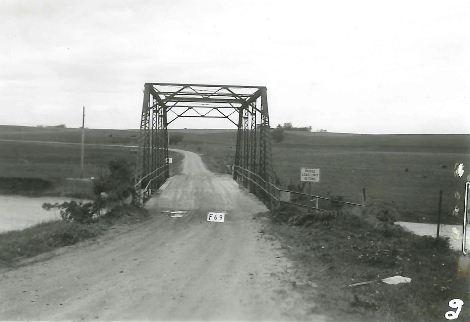
This article is in connection with the creation of the database for the Bridge Builder’s Directory in the Bridgehunter’s Chronicles’ wordpress page, which you can click here to view. More information is needed on this gentleman, who contributed a great deal in engineering southwestern Minnesota, including Jackson, Cottonwood and Murray Counties. If you have information that will help, the contact details are at the end of the article.
Charles Wallace Gove is a little known figure in the engineering business as his primary focus was building bridges, roads and ditches in southern Minnesota, in and around Cottonwood County (where Windom is located). Little is known about the bridges he built except records indicated he built two bridges in Jackson County (which are profiled at the end of this info sheet) and an unknown number in his county. On the political level, he was a dedicated farmer and political journalist who left his mark at the State Capitol with his plan that is still being used today for commercial farming.
Born in 1863 in De Witt, Iowa, he and his brother Wade settled in Jackson County, Minnesota in 1886, where he farmed and taught in nearby Lakefield until his move to Cottonwood County in 1895, where he established his farmstead in Great Bend Twp. northwest of Windom. From that time on until his death in 1936, Mr. Gove busied himself with the transportation sector, first as a surveyor until 1912 and then afterwards, as a county engineer. During his tenure as surveyor, he led the efforts in constructing ditches in Cottonwood, Nobles and Murray Counties and later on in parts of Jackson County, as flooding was rampant during that time, and farmers needed them to provide runoff for the excess waterflow.
It was also during that time that he led the bridge building effort in parts of Jackson County, as county officials were turning to local builders who were willing to construct bridges at an affordable price. While the bridges he built were not spectacular in design, his most worthy structures were the bridge near Rost as well as the second crossing at Petersburg, built in 1912 and 1915, respectively. When he was not building bridges and maintaining the roads in Cottonwood County, he wrote various articles and essays for local and regional newspapers, including his most famous one, the Minnesota Plan. There, he advocated simpler farming techniques, which included constructing deeper and systematic plowing before planting and ditches to provide water run-off. His writings dealt with philosophical thoughts mixed with a bit of wit and humor that made the readers enjoy every paragraph. He was recognized by the state for his work at the time of his death. Charles Gove died on 29 August, 1936.

The Bridges built by C.W. Gove:
Rost Bridge
Location: Little Sioux River at 390th Avenue, 0.1 mile south of Interstate 90 in Rost Twp.
Type: Steel stringer with steel railings (altered in the 1970s)
Dimensions: 32.3 feet long; 16.4 feet wide
Built in 1912, replaced in 2002
This bridge used to carry a key road to the unincorporated village of Rost, located 2 miles north of the bridge. The village had a couple trading businesses and a church, the latter of which still exists today. The contract was given to C.W. Gove to build this bridge on 8 July, 1912, which was completed by the end of that year. The road was cut off by the Interstate in 1973 and after 90 years in service, this bridge was replaced by a pair of culverts in 2002.
Petersburg Village Bridge
Location: West Fork Des Moines River on a local road in Petersburg
Type: Two-span Pratt pony truss with pinned connections and steel cylindrical piers
Dimensions: 171 feet long (2x 81-foot truss spans); 16 feet wide
Built in 1915 replacing an earlier structure; destroyed in the 1965 flooding during the construction of its replacement upstream. Replacement bridge opened in 1965
The Village Bridge was the longest bridge known to have been built by C.W. Gove. He was awarded a contract to build the structure for $3050 to replace the bridge built 30 years earlier, just after it was founded. The bridge was in service until the Flood of 1965, which destroyed the structure. It was also at that time that a construction worker at the new bridge, located one mile west of the old one, fell into the icy river and drowned. His body was recovered in June 1965, three months after the replacement bridge opened to traffic
Do you know of other bridges built by C.W. Gove or have some more knowledge about the Minnesota plan or his written work? Let’s hear about it. Contact Jason D. Smith at the Chronicles at flensburg.bridgehunter.av@googlemail.com and feel free to provide some additional information for this fact sheet about this unknown engineer who left a mark on the local level. The info will be added and/or modified based on what comes in.

Photos of the Rost and Petersburg Village Bridges are courtesy of MnDOT




